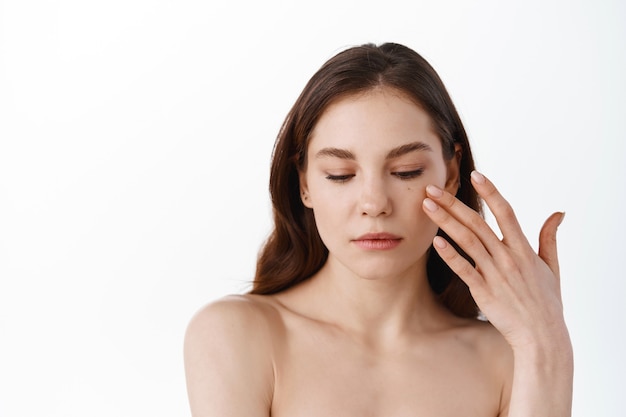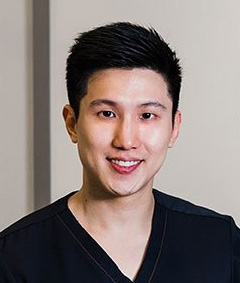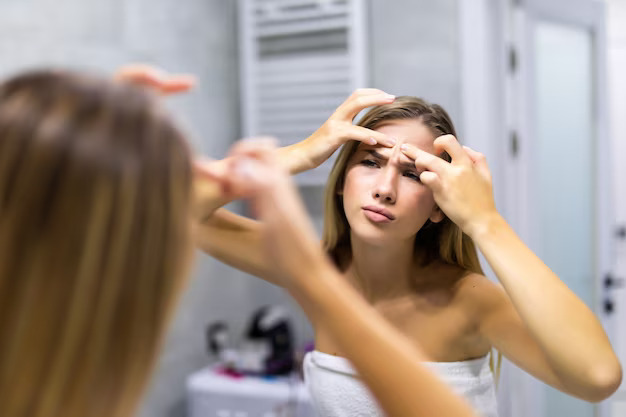Benzoyl peroxide is a well-established, over-the-counter treatment for mild to moderate acne, a skin condition affecting many individuals worldwide. Dr Justin Boey, Medical Director of Sozo Aesthetic Clinic, shares more from his personal experience. It kills the bacteria that cause acne and clears the skin of excess oils and dead skin cells. Before embarking on a treatment regimen, it is crucial to understand how benzoyl peroxide works, how to use it properly, and what side effects may occur.
This article will provide a comprehensive guide to using benzoyl peroxide for acne treatment, empowering you with the knowledge to make informed decisions about your skin health.
Contents
- 1 What Is Benzoyl Peroxide?
- 2 How Benzoyl Peroxide Works Against Acne
- 3 Benefits of Benzoyl Peroxide
- 4 Different Forms of Benzoyl Peroxide Products
- 5 How to Use Benzoyl Peroxide
- 6 Side Effects and Risks
- 7 Benzoyl Peroxide Acne FAQs
- 7.1 Can I use benzoyl peroxide with other acne treatments?
- 7.2 Is benzoyl peroxide available over the counter?
- 7.3 How long does it take to see results with benzoyl peroxide?
- 7.4 Is benzoyl peroxide safe during pregnancy or breastfeeding?
- 7.5 Can benzoyl peroxide prevent future acne breakouts?
- 7.6 Can I leave benzoyl peroxide on my face overnight?
- 7.7 When should I stop using benzoyl peroxide for acne?
- 8 Seek Professional Guidance
- 9 Conclusion
What Is Benzoyl Peroxide?
Benzoyl Peroxide, a potent antimicrobial substance, is widely used in acne treatments for its remarkable properties. Acting as a keratolytic agent, it not only promotes exfoliation of the skin’s outer layer but also facilitates the removal of dead skin cells that tend to clog pores and contribute to acne formation. With its strong antibacterial effects, Benzoyl Peroxide effectively targets and eliminates Propionibacterium acnes, the bacterium responsible for acne inflammation.
By addressing acne at its root cause, this versatile treatment option reduces the severity of breakouts and helps prevent future ones. Available in various forms, such as creams, gels, and cleansers, Benzoyl Peroxide offers a comprehensive approach to acne management, providing individuals with a wide range of options to tailor their own acne treatment products to their specific needs and preferences.
How Benzoyl Peroxide Works Against Acne
Benzoyl Peroxide penetrates the skin and enters the pores, breaking down into benzoic acid and oxygen. The oxygen component is lethal to the anaerobic Propionibacterium acnes bacteria that flourish in the low-oxygen environments of blocked pores. By introducing oxygen, benzoyl peroxide eliminates the bacteria without allowing them to develop resistance.
Simultaneously, the benzoic acid component helps to peel the skin and unclog the pores. This dual action of oxygenating and exfoliating underpins its effectiveness in reducing existing inflammatory acne and lesions and preventing new ones from forming.
Benefits of Benzoyl Peroxide
Benzoyl Peroxide offers several advantages as an acne treatment:
Effectiveness: Benzoyl peroxide has been widely studied and proven highly effective in treating mild to moderate acne. Its powerful properties work by targeting and eliminating the Propionibacterium acnes bacteria, a major cause of acne. Additionally, benzoyl peroxide helps to unclog pores, reducing the occurrence of breakouts and promoting clearer skin.
Availability: One of the major advantages of benzoyl peroxide is its easy accessibility. It is readily available as an over-the-counter treatment in many pharmacies and supermarkets. The fact that it does not require a prescription makes it a convenient choice for individuals seeking effective acne treatment without needing a doctor’s visit or prescription medication.
Versatility: Benzoyl peroxide has many strengths and formats, including creams, lotions, gels, and washes. This versatility allows individuals to choose the most suitable product for their skin type and lifestyle. Whether someone prefers a lightweight gel for daily use or a cream for overnight treatment, benzoyl peroxide can be adapted to fit their skincare routine.
Preventative Action: Besides treating existing acne lesions, benzoyl peroxide has a preventive aspect. Regular use of benzoyl peroxide helps to maintain a bacteria-free environment in the pores, preventing the formation of new acne breakouts. By incorporating benzoyl peroxide into a skincare routine, individuals can take proactive steps to prevent future acne flare-ups and maintain clearer skin in the long term.
Resistance: Unlike antibiotics, which can lead to bacterial resistance over time, benzoyl peroxide does not promote the development of resistance in acne-causing bacteria. This means benzoyl peroxide remains an effective long-term solution for managing acne, even with continued use. Its ability to consistently combat acne-causing bacteria makes benzoyl peroxide a reliable choice for individuals seeking a sustainable approach to acne treatment.
Please bear in mind that while benzoyl peroxide is a potent acne treatment, its suitability may vary from person to person, depending on individual skin types and conditions. It’s advisable to consult a dermatologist or a skilled skin care professional to determine the most effective acne treatment for your unique needs.
Different Forms of Benzoyl Peroxide Products

Benzoyl peroxide is available in various forms and concentrations, making it adaptable to different skin types and acne severities. These include:
Creams are typically less potent and can be a good choice for those with dry or sensitive skin. Creams are often combined with moisturising agents, such as hyaluronic acid or shea butter, that help mitigate benzoyl peroxide’s drying effects. They provide a nourishing and hydrating treatment, leaving the skin soft and supple.
Gels: Gels are more potent than creams and best suited to those with oily skin. They are often fast-absorbing and provide a refreshing and lightweight treatment. Gels are formulated with ingredients like salicylic acid or tea tree oil, which have excellent oil-controlling properties. They penetrate deep into the pores, targeting acne-causing bacteria and reducing excess oil production.
Washes: Washes are gentler than creams or gels and can benefit those with body acne. They are less likely to irritate and can be used on larger body areas, such as the back or chest. Washes contain ingredients like sulfur or glycolic acid, which help to exfoliate the skin and unclog pores. They provide a thorough cleanse and leave the skin feeling refreshed and revitalized.
Benzoyl peroxide products have various strengths, typically 2.5% to 10%. Lower concentrations (2.5%-5%) can be just as effective as higher ones but are less likely to cause skin irritation. A higher concentration (10%) may suit those with severe acne, but it’s more likely to cause dryness and irritation.
Selecting the appropriate form and concentration of benzoyl peroxide depends on several factors, including the severity of the acne, the individual’s skin type, and their tolerance to the product. A healthcare professional or dermatologist can provide personalised advice based on these factors. As a general rule, starting with a lower concentration is recommended to see how your skin reacts, then adjusting as needed.
How to Use Benzoyl Peroxide
Here are some general steps to guide you on how to correctly apply Benzoyl Peroxide:
Preparation: Begin by washing your hands and cleansing the skin area where you intend to apply the product. Use a mild, non-abrasive cleanser to gently clean the skin, then pat it dry. This ensures that your skin is clear of oil, dirt, and makeup, which could hinder benzoyl peroxide’s effectiveness.
Application: Apply the product to the affected area. If it is your first time using the product, start with a small amount to see how your skin reacts. As your skin builds tolerance, you can gradually increase the amount used. Use a pea-sized amount for a cream or gel, while for a wash, follow the instructions on the product packaging.
Distribution: Spread the benzoyl peroxide product evenly over the entire area affected by acne, not just the individual spots. Benzoyl peroxide is designed to treat acne by preventing new blemishes, so it’s crucial to apply it to all acne-prone areas.
Absorption: Allow the product to be fully absorbed into your skin. Do not rinse it off unless it is a wash. When using a wash, rinse thoroughly to prevent any product residue that could cause irritation.
Moisturising: After using benzoyl peroxide, apply a non-comedogenic moisturizer to hydrate your skin.
Sun protection: Due to its increased sensitivity to the sun, it is important to always apply sunscreen when using benzoyl peroxide outdoors during the day.
Remember, using benzoyl peroxide products consistently is crucial to see results. However, if you experience severe irritation or allergic reactions, stop using the product and consult your healthcare provider.
Side Effects and Risks

Like all medicated products, benzoyl peroxide can have potential side effects and risks, which one should be aware of before starting the treatment.
Skin Irritation: Benzoyl peroxide’s most common side effects are dryness and skin irritation. These may manifest as redness, swelling, itching, burning, peeling, or a feeling of warmth. These effects are usually mild and improve over time as your skin adjusts to the medication.
Skin Sensitivity: Benzoyl peroxide can increase your skin’s sensitivity, particularly to the sun. This can result in sunburns, blistering, or rashes on the treated areas if exposed to the sun without adequate protection.
Allergic Reaction: In rare cases, benzoyl peroxide can cause a serious allergic reaction. Symptoms can include difficulty breathing, dizziness, facial or throat swelling, and severe skin rash.
Dryness and Peeling: Higher concentrations of benzoyl peroxide can cause excessive dryness and peeling of the skin, particularly in those with dry or sensitive skin types.
Discolouration: Benzoyl peroxide may bleach hair or coloured fabric upon contact, so caution is advised when applying the medication and choosing to clothe.
It’s important to remember that everyone’s skin is different, and not everyone who uses benzoyl peroxide will experience these side effects. However, if you do, and they persist or worsen, you should stop using the product and consult with a healthcare professional or dermatologist. To minimise the risk of side effects, always start with a lower concentration and slowly increase as your skin builds tolerance.
Benzoyl Peroxide Acne FAQs
Can I use benzoyl peroxide with other acne treatments?
Yes, benzoyl peroxide can be used with other acne treatments for more comprehensive skincare. However, using these combinations cautiously is important to avoid potential skin irritation.
Benzoyl Peroxide and Salicylic Acid: Salicylic acid is a beta hydroxy acid that can penetrate the pores, dissolve excess sebum and dead skin cells, and reduce blackheads and whiteheads, making it an effective treatment for acne. On the other hand, benzoyl peroxide kills acne-causing bacteria and reduces inflammation. However, using these two treatments simultaneously can be too harsh for some, leading to dryness and irritation. It’s advisable to incorporate them separately into your routine (one in the morning, one in the evening) or use them on alternate days.
Benzoyl Peroxide and Niacinamide: Niacinamide, also known as Vitamin B3, has anti-inflammatory properties, which can soothe the redness and inflammation caused by acne. It also helps balance oil production and improve skin barrier function, thus complementing the effects of benzoyl peroxide. Using benzoyl peroxide and niacinamide can help mitigate the drying effects of benzoyl peroxide. However, as with any skincare combination, monitoring your skin’s reaction and adjusting usage as needed is important.
Is benzoyl peroxide available over the counter?
Yes, benzoyl peroxide is readily available over the counter in many countries, including the United Kingdom. You can find it in various forms, such as creams, gels, lotions, and washes in various concentrations. Most over-the-counter products typically contain 2.5% to 10% benzoyl peroxide. However, higher concentrations or certain formulations may only be available on prescription. As a healthcare professional advises, it’s always best to start with a lower concentration to assess your skin’s tolerance and response, gradually working your way up if necessary.
Always follow the instructions on the packaging and seek medical advice if you experience persistent or severe side effects.
How long does it take to see results with benzoyl peroxide?
Benzoyl peroxide typically starts showing results within 5 to 7 days of consistent use, but the full effects are often visible at 4 to 6 weeks of regular application. During the initial weeks, acne may appear to get worse before it gets better, which is a common part of the process and shouldn’t be a cause for concern. However, if after 6 to 8 weeks, there’s no significant improvement or the condition worsens, it would be advisable to consult with a healthcare professional or dermatologist. Remember, persistence is key in acne treatment, and giving each new treatment a fair trial is important before deciding on its efficacy.
Is benzoyl peroxide safe during pregnancy or breastfeeding?
Benzoyl peroxide is generally considered safe for use during pregnancy and breastfeeding. The topical nature of the medication means minimal absorption into the bloodstream, posing little risk to the developing foetus or breastfed child. However, as with any medication, it’s crucial to discuss its usage with a healthcare provider if you’re pregnant, planning to conceive, or breastfeeding. They can provide tailored advice based on your health profile, evaluating the benefits against potential risks.
Can benzoyl peroxide prevent future acne breakouts?
Yes, benzoyl peroxide can play a significant role in preventing future serious acne scars and breakouts. Its antibacterial properties continue to work even after your acne has cleared up, helping to keep your pores free of the bacteria that cause acne. Regular benzoyl peroxide helps maintain a clear complexion and prevent future breakouts. It’s important to use it as directed by your healthcare provider and not to stop the treatment once your skin improves unless directed otherwise.
However, every individual’s skin is different, and so are the root causes of their acne. While benzoyl peroxide is a highly effective acne treatment for many, it may not be the most suitable option for everyone. Some people may find benzoyl peroxide too drying or irritating for their skin type, or their acne might be triggered by factors that benzoyl peroxide doesn’t address.
Therefore, seeking personalised advice from a healthcare provider or dermatologist is essential. They can assess your skin type, evaluate the cause of your acne, and recommend a treatment plan tailored to your individual needs, which may include benzoyl peroxide alongside other treatments for best results.
Can I leave benzoyl peroxide on my face overnight?
Yes, benzoyl peroxide is typically left on the skin overnight. This allows sufficient time to penetrate the skin and perform its antibacterial action. However, it’s vital to follow the instructions provided with the product. Some benzoyl peroxide products are designed to be left on for a certain period of time and then washed off, while others are meant to be left on the skin.
If the product causes excessive drying or irritation, gradually increasing the application time may be beneficial instead of leaving it on overnight right from the start. It’s always best to seek advice from a healthcare professional if you need clarification on how to use a product or if you experience persistent or severe side effects.
When should I stop using benzoyl peroxide for acne?

Suppose you experience severe skin irritation, redness, swelling, or excessive dryness that doesn’t go away while using benzoyl peroxide for acne or a moisturizer. In that case, it’s best to stop using it right away. In addition, if you notice any allergic reaction symptoms such as rash, itchiness, dizziness, trouble breathing, or swelling of the face, lips, tongue, or throat, you should also discontinue usage immediately.
Moreover, you should consult your healthcare provider if you don’t see any significant improvement in your acne after using benzoyl peroxide regularly for 6 to 8 weeks. It’s important to keep in mind that even though benzoyl peroxide is effective in treating inflammatory acne for many people, individual responses may vary. If you have any concerns or questions about your acne treatment, it’s always best to seek professional advice.
Seek Professional Guidance
If you are struggling with severe or persistent acne, it is important to consult with a healthcare provider or dermatologist for professional guidance. They can assess your skin condition and suggest the most effective treatment options. Consistent use of any acne treatment is crucial for achieving and maintaining clear skin. However, it is equally important to address the underlying cause of your acne in the long term.
If you have any questions or concerns regarding the use of benzoyl peroxide for acne, do not hesitate to seek the advice of a healthcare professional. The Sozo Clinic provides consultations with experienced dermatologists who can offer personalized recommendations based on your skin type and needs. You can contact us via phone at +6935 1811 or email ask@sozoclinic.sg
Conclusion
Benzoyl peroxide can be a potent ally in your fight against acne thanks to its antibacterial properties and ability to prevent future breakouts. It’s generally considered safe for use during pregnancy and breastfeeding, and it can show significant results within 4 to 6 weeks of consistent use. However, every individual’s skin is unique, and responses to acne treatments can vary.
If you experience severe side effects or if your acne doesn’t improve after 6 to 8 weeks of use, it’s crucial to consult with a healthcare provider or dermatologist. Always remember, while choosing any acne treatment, it’s not just about managing symptoms but addressing the root cause to achieve long-term improvement.





